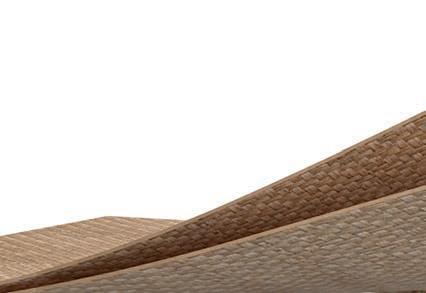
10 minute read
FIBRE COMPOSITES
Sustainable thinking

Racecar talks to Johann Wacht of Bcomp to fi nd out how technology transfer from motorsport can play an important role in preserving the future of our planet

By Gemma Hatton

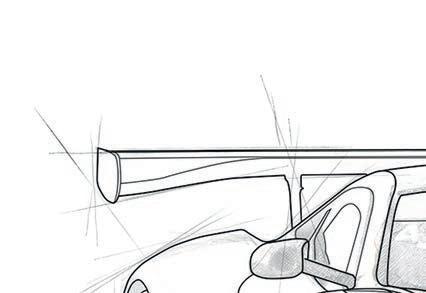
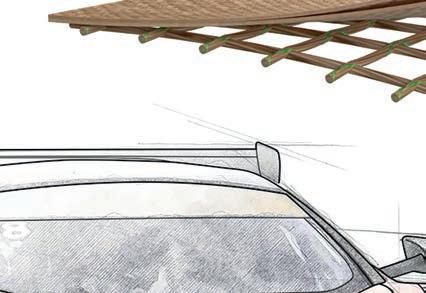
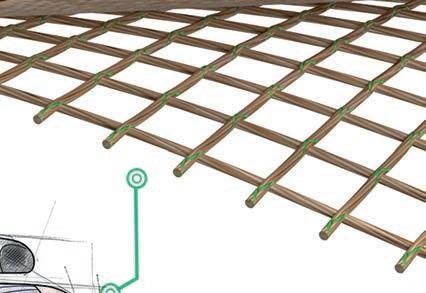
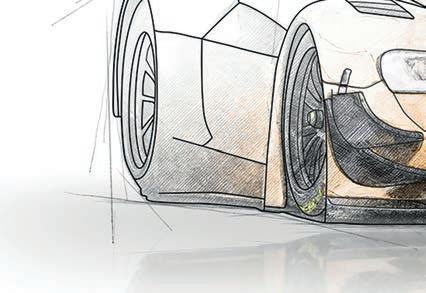
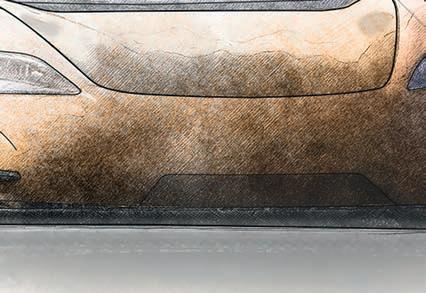
A motorsports bodywork lay up with two layers of ampliTex reinforced on the b-side with powerRibs


If there was anything good to come from the Covid-19 pandemic, it was how quickly the planet began to recover without the normal levels of human activity. While we were locked in our homes, skies became clearer, waterways less polluted and wildlife returned to local areas.
Within a few months of lockdowns, people in the northern Indian state of Punjab could see the Himalayas from more than 100 miles away for the fi rst time in decades. The canals in Venice were blue, and mountain lions roamed the streets of Santiago.
Overall, the global CO2 emissions in 2020 dropped by 6.4 per cent, which equates to 2.3 billion tonnes of CO2 that didn’t enter the atmosphere. The quick recovery of Mother Nature provided hope during a very dark time, but it also bought into sharp focus the impact we have on our planet.
The good news is that since the ordeal of 2020, society has had a shift in mindset. More companies than ever are driving towards a more environmentally friendly future, which has opened the door for more sustainable technologies to be designed, developed and integrated into all industries, but specifi cally here the motorsport industry.
‘When we fi rst entered motorsport, the regulators were mostly interested in the safety benefi ts of our natural fi bre composites,’ explains Johann Wacht, manager of motorsports and supercars at Bcomp. ‘Unlike carbon, our materials don’t splinter, which reduces the risk of punctures.
‘But when the pandemic came and people were forced to stay at home with their families, their perspectives changed, and they became more concerned about the future and therefore sustainability. This meant people started to really understand


» The technical sweet spot of our natural fibre composites lies in stiffness. We can achieve the same stiffness and weight as an 830gsm monolithic carbon fibre lay up
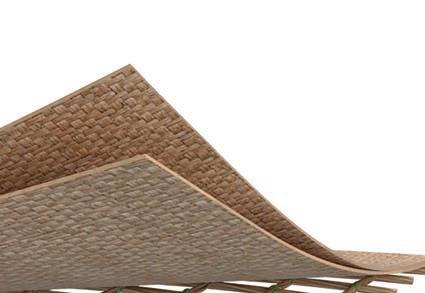
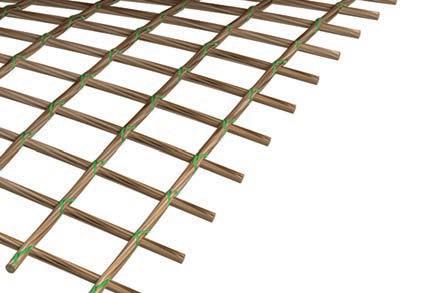
» When we first entered motorsport, the regulators were mostly interested in the safety benefits of our natural fibre composites

Johann Wacht
the added value of our technology and that by integrating natural fi bre composites into racecars, not only are you making them safer, you are making them more sustainable, too.’

Natural fibre composites

Bcomp has developed a natural fi bre composite using fl ax fi bres extracted from the stem of the Linum usitatissimum plant. These fi bres are woven together to produce a fl exible fabric called ampliTex, which is then impregnated with epoxy resin, similar to a ply of carbon fi bre. Diff erent weaving patterns such as bi-axial, twills and uni-directional can then be used to tailor the mechanical properties of the material to suit specifi c applications.
Flax fi bres can also be twisted to form a thick yarn that can then be stitched together to create a grid, called powerRibs. To achieve high stiff ness for minimal weight, powerRibs can be bonded to the ampliTex fabric, providing reinforcement and forming a 3D structure on one side of a thin-walled shell element.
‘The technical sweet spot of our natural fi bre composites lies in stiff ness,’ says Wacht. ‘We can achieve the same stiff ness and weight as an 830gsm [grams per square metre] monolithic carbon fi bre lay up, making our materials perfect for any semi-structural part that is mainly loaded in bending.
‘But if you need high strength, or very high stiff ness, then carbon fi bre composites are superior.’
Consequently, Bcomp focuses primarily on thin-shelled parts, typically monolithic applications up to 1mm thick / 1000gsm carbon lay ups, such as racecar bodywork. This was fi rst featured on the bodywork of the Four Motors Bioconcept cars, in collaboration with Porsche Motorsport and Fraunhofer, and was so successful that natural fi bre composites were quickly integrated into the bodywork of GT4, DTM and Extreme E cars.
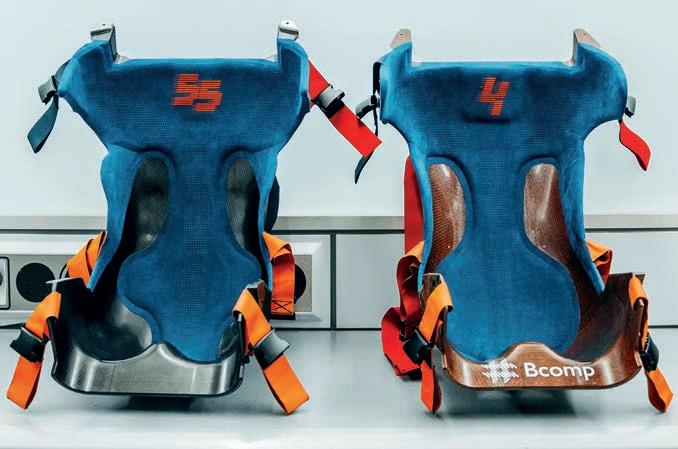
McLaren racing seat with Bcomp ampliTex and powerRibs integrated into the structure

AmpliTex reinforcement fabric (dry), showing the natural fibre its made from and two different weave patterns
Interior design
Another growing application of Bcomp’s product is automotive interior door panels and trim parts. This technique has been adopted by the likes of Polestar and Volvo in their concept cars over the last few years and, by the end of 2022, Bcomp will be supplying the fi rst large scale automotive project in the interior sector.
However, it’s not just bodywork and interiors that natural fi bre composites are now suitable for. This was proven with motorsport’s fi rst natural fi bre Front Impact Absorbing Structure (FIAS). This was designed and manufactured by Ycom for a
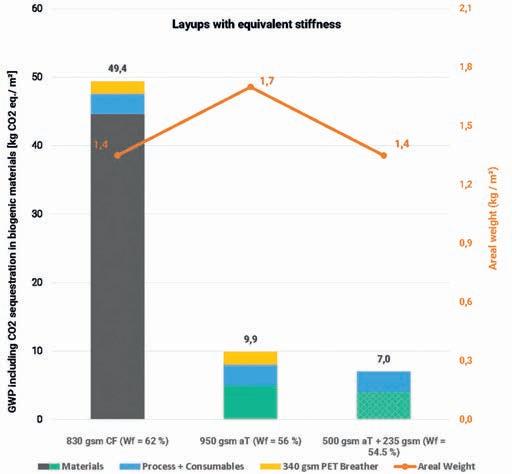
Carbon footprint of composite lay ups Carbon footprint of interior panels
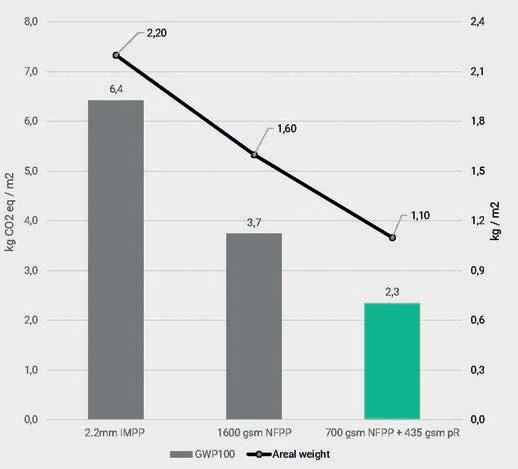
formula car and passed FIA crash safety standards in 2020. Although 27 per cent heavier than carbon fibre, the design offers an estimated 77 per cent reduction in material CO2 emissions, while the overall weight of the car increased by less than one per cent.
If this slight increase in weight is not an option, or the performance requirements are too challenging for a 100 per cent natural fibre lay up, ampliTex and powerRibs can be combined with carbon fibre skins. This approach was used for BMW’s iFE.20 Formula E car and the latest Super Formula Next50 cars, which still allowed a natural fibre use of 70 per cent whilst achieving high levels of performance.
Environmental impact
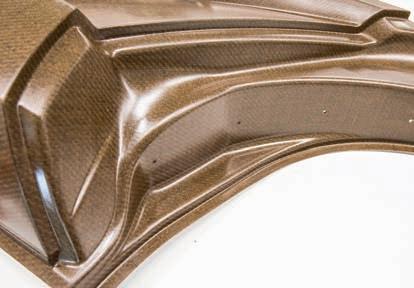
To fully understand the environmental impact of any part, product or material, the carbon footprint of the product’s entire life cycle must be calculated. This is known as a cradle-to-grave life cycle analysis, and considers every stage of a product’s life cycle, from extracting the natural resources from the ground, through manufacturing and product use, to final disposal.
However, it is extremely difficult for manufacturers to quantify the CO2 emissions once a product has been transported to a consumer, which is why the majority of companies conduct so-called cradleto-gate life cycle analyses instead. These consider the part of a product’s life cycle from extraction through to the product leaving the manufacturing factory.
To compare the carbon footprint of natural fibre composites with carbon fibre, Bcomp conducted a study that analysed the global warming potential (GWP) of the greenhouse gas emissions from cradle to gate.
GWP essentially measures how much heat energy one tonne of greenhouse gas will absorb in the atmosphere, relative to one tonne of CO2. In this way, the actual impact of a product’s life cycle emissions on the planet can be better estimated, rather than just looking at the total emissions. For example, methane has a GWP of 27-30 over 100 years so, if one tonne of methane is emitted to the atmosphere, it would have the same effect as emitting 27-30 tonnes of CO2.
‘Often the bodywork of GT cars consists of a lay up of carbon fibre that is approximately 830 gsm as this gives the required stiffness,’ explains Wacht. ‘Considering the GWP of the materials, processes and consumables, the carbon footprint of this type of carbon fibre is 49.4kg CO2 eq/m². Normalising the part size and stiffness, the carbon footprint for the equivalent amount of natural fibre composite using just ampliTex [polyethylene terephthalate] is 9.9 kg CO2 eq/m², although this material is slightly heavier than carbon.
‘But when we use ampliTex with powerRibs, this drops to 7kg CO2 eq/ m², whilst matching the stiffness and weight of carbon fibre. So, overall, our materials can reduce cradle-to-gate CO2 emissions by 80 to 85 per cent.’
Johann Wacht
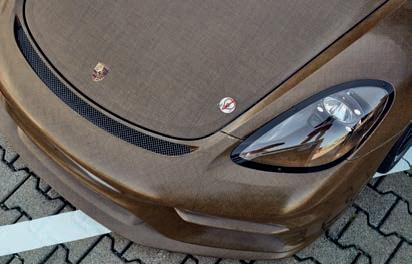
Porsche 718 Cayman GT4 Clubsport MR with natural-fibre composite exterior formed using ampliTex and powerRibs
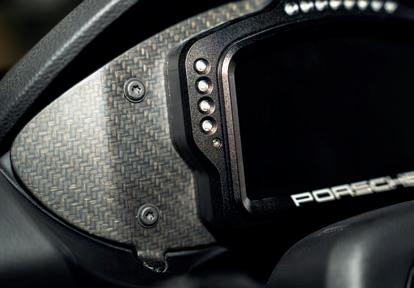
Close up of one of the interior components of the Porsche 718 Cayman GT4 Clubsport MR made from Bcomp natural fibre materials
A-side of a bodywork section made with Bcomp ampliTex and powerRibs

The same analysis can be done for automotive interiors. Conventionally, manufacturers use thermoplastics such as Injection Moulded Polypropylene (IMPP), which has a carbon footprint of 6.4kg CO2 eq/m². Replacing this with Natural Fibre Polypropylene (NFPP) reduces this to 3.7kg CO2 eq/m². Combining NFPP with powerRibs drops this further to 2.3kg CO2 eq/m².
A natural fi bre composite part with powerRibs can therefore achieve up to 50 per cent less weight, 70 per cent less plastic and 62 per cent lower CO2 emissions compared to standard IMPP interiors.
Carbon emissions
‘Ultimately, we need to reduce carbon emissions in any way we can, because every gain we make emits slightly less CO2 into the atmosphere and reduces the eff ects of climate change,’ concludes Wacht.
‘Of course, the ideal solution would be to achieve technologies that are 100 per cent sustainable but, if this is not possible right now, then why not aim for 70, 80 or 90 per cent? We often get challenged over the fact we still use epoxy resin, but our materials still reduce CO2 by up to 85 per cent on part level compared to carbon fi bre, which is much better than nothing, until we fi nd a fully sustainable alternative.
‘Natural fi bre composites may not be applicable for Formula 1 crash structures yet, but that hasn’t stopped McLaren F1 integrating our materials into drivers’ seats and pit stands. So I think society needs to think in this way and minimise the environmental impact wherever we can, whilst continuing the momentum of developing sustainable technologies.’ l
Manufacturers keen to stress their eco credentials are jumping on board. Here a BMW M GT4 with Bcomp bodywork
The perfect platform
As concern about climate change gained momentum in 2018, there were question marks over the future of motorsport. After all, it encourages people to travel to circuits and watch cars race in circles that are prepared by teams who travel across the world – all for entertainment purposes. However, as has always been the case, racing provides the perfect platform to drive change. Just as manufacturers followed the ‘race on Sunday, buy on Monday’ model decades ago, the same applies for sustainable technologies today.
‘Motorsport has the power to test, develop, promote and scale sustainable technologies to a global audience,’ highlights Johann Wacht, manager of motorsports and supercars at Bcomp. ‘Often discussions about sustainability in motorsport revolve around the race event itself. Yet all the sustainability initiatives implemented at a racetrack can also be put in place at a football or NBA stadium. The trick with motorsport, though, is that the technology developed on racecars can be directly transferred to the automotive industry, and the cars we drive on a daily basis.
‘It’s this technology transfer to wider society that makes motorsport such a unique platform for developing and scaling sustainable technologies to maximise impact. And why it has such an important role to play in the planet’s future.’
It’s not just for show either. Here’s Four Motor’s Porsche 718 Cayman GT4 Clubsport MR in competition with its natural fibre composite panels using ampliTex and powerRibs











